














| Longbodied Cellar Spider (Pholcus phalangioides (Fuesslin, 1775)) |















|
|
Scientific name: Pholcus phalangioides (Fuesslin, 1775) Common name: Longbodied Cellar Spider Other names: Longbodied Cellar spider, Daddy Long-Legger, GrandLongbodied Cellar spider, Cellar spider or Vibrating spider. French name: Pholque phalangide Order: Araneae Family: Pholcidae Size: Body size: 8-10mm, the size of the legs is about 5.5 times the body size. Females are generally slightly larger than males. Biotope: Inside buildings. Web: Tangled and almost invisible. Observation period: All year long for females, spring and summer for males. Geographic area: Worldwide widespread. |
Longbodied Cellar spiders are very common inside buildings where they are protected against cold temperatures. They spin messy, tangled and almost invisible webs. The scientific name "pholcus" comes from a Greek word meaning "squinting" because of the location of the eyes which are grouped in two prominent clusters of three eyes plus two small eyes grouped in between. Longbodied Cellar spiders need humidity, they prefer shadowed areas. They can also walk down from their web to drink. They vibrate their webs and become almost invisible when they feel threatened. They catch many flying or crawling insects. They wrap them in a cocoon of silk before eating them. Then, dried cocoons are detached from the web and fall down on the ground. Longbodied Cellar spiders are also able to attack other much larger spiders like Tegeneria. The abdomen is cylindrical or more spherical depending of food availability and on females full of eggs. The pale coloured cephalothorax shows a dark central patch cut in two parts by a pale longitudinal line. You can recognize males with their enlarged pedipalps looking like "boxing gloves". The female carries the fertilized eggs (30 to 40) during 3 weeks in some kind of a silk bag. There is a possible confusion with Pholcus opilionoides which is a smaller size (3 to 5.5 mm) and less linked to human buildings. The sternum is dark grey with a white longitudinal stripe and three white spot on each side. The patch on the cephalothorax is much thinner than on Pholcus phalangioides. There are few other smaller patches near the edges of the cephalothorax. The Marbled Cellar Spider (Holocnemus pluchei) shows brown markings on the abdomen and there is a black stripe on the under side. |
| [To know more about the Longbodied Cellar Spider] [Next picture] [Top] |
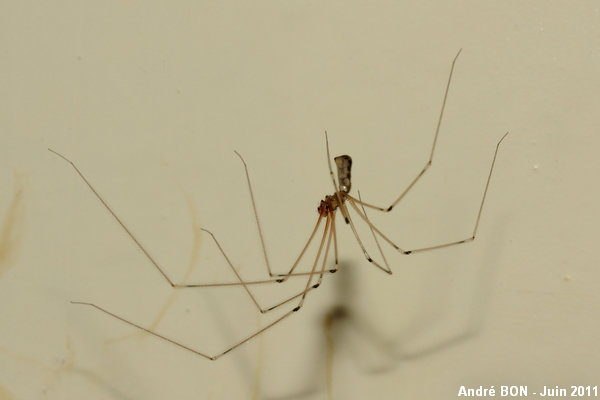
|
It' not hard to find a Longbodied Cellar spider to take a picture. |
| [To know more about the Longbodied Cellar Spider] [Next picture] [Previous picture] [Top] |
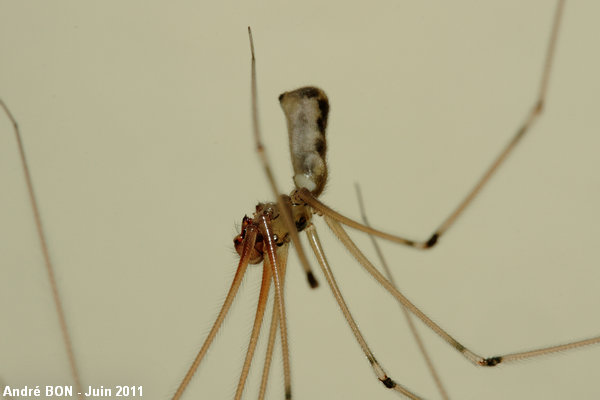
|
I do not see enlarged pedipalps like "boxing gloves", I think that this one is a female. |
| [To know more about the Longbodied Cellar Spider] [Next picture] [Previous picture] [Top] |
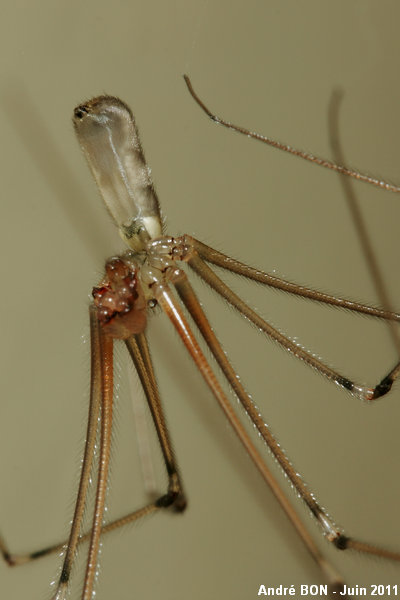
|
I still need to make progress to show one picture with the layout of the eyes of Pholcus phalangioides. |
| [To know more about the Longbodied Cellar Spider] [Next picture] [Previous picture] [Top] |
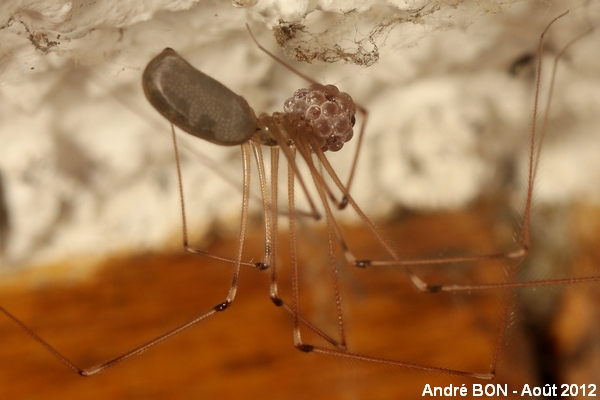
|
Here is one female with its small silk bag full of eggs. |
| [To know more about the Longbodied Cellar Spider] [Next picture] [Previous picture] [Top] |
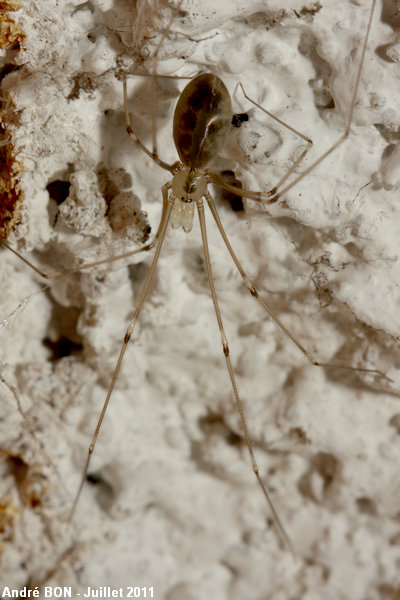
|
You can clearly see the swollen pedipalps. This one is a male. |
| [To know more about the Longbodied Cellar Spider] [Next picture] [Previous picture] [Top] |
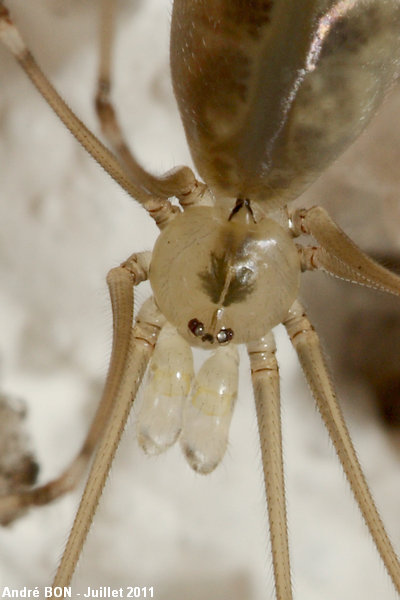
|
Close-up view of the male's head. More than the pedipalps you can see the location of the eyes grouped in two clusters of 3 eyes each, with one additional central cluster of 2 eyes. |
| [To know more about the Longbodied Cellar Spider] [Next picture] [Previous picture] [Top] |
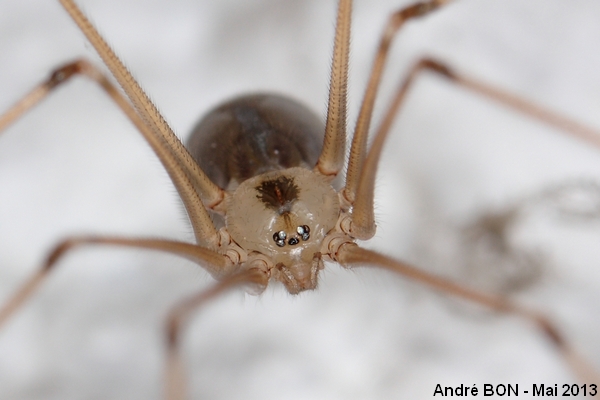
|
Other close-up view on the eye pattern. |
| [To know more about the Longbodied Cellar Spider] [Next picture] [Previous picture] [Top] |
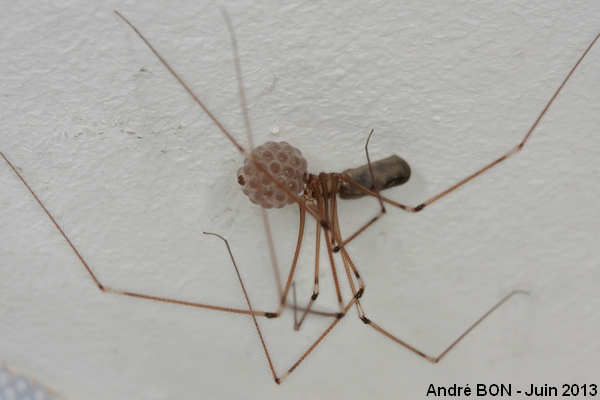
|
How many eggs are there in this small silk bag? Assuming that the eggs are flexible and so there is no empty space in the silk bag, the number of eggs is then equal to the cube of the ratio between the diameter of the sac and that of an egg. The measurement followed by the calculation gives a result equal to 91 (cube of 4.5). I will wait for the hatch out to count. |
| [To know more about the Longbodied Cellar Spider] [Next picture] [Previous picture] [Top] |
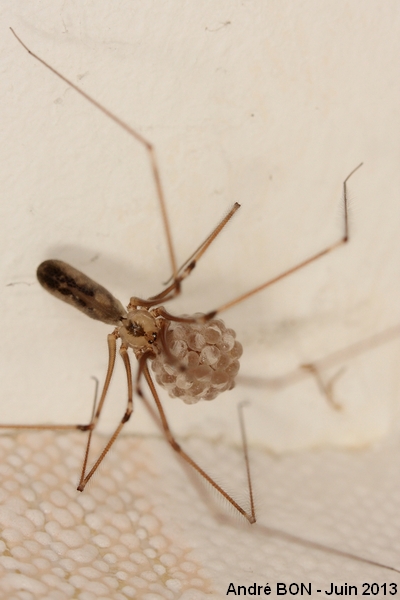
|
Hatching out time is approaching. The legs of the small spiderlings are visible by transparency at the surface of the eggs. |
| [To know more about the Longbodied Cellar Spider] [Next picture] [Previous picture] [Top] |
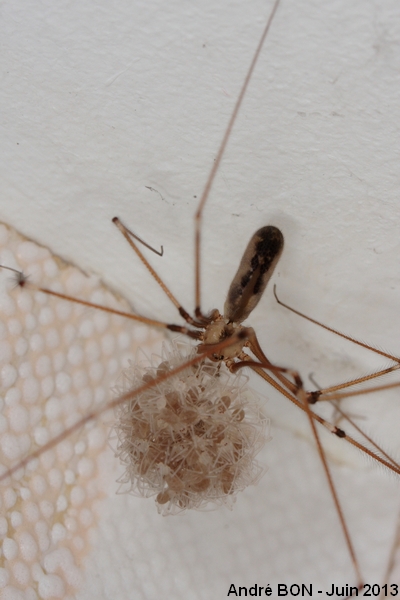
|
The young spiderlings are now out of the eggs. I just need to wait for dispersion to be able to count them. |
| [To know more about the Longbodied Cellar Spider] [Next picture] [Previous picture] [Top] |

|
And here is the result. By analysing this picture I have counted 72 young spiderlings. My calculation result was over by 26%. |
| [To know more about the Longbodied Cellar Spider] [Next picture] [Previous picture] [Top] |
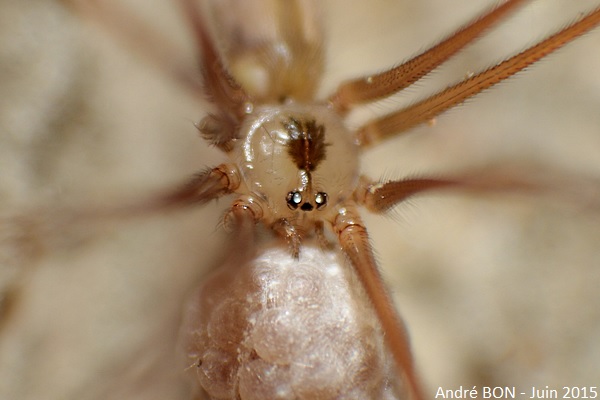
|
Try of a high magnification picture using a reverse-mounted 24 mm lens. The depth of field is really very short. |
| [To know more about the Longbodied Cellar Spider] [Next picture] [Previous picture] [Top] |

|
Another view of the same specimen. |
| [To know more about the Longbodied Cellar Spider] [Next picture] [Previous picture] [Top] |
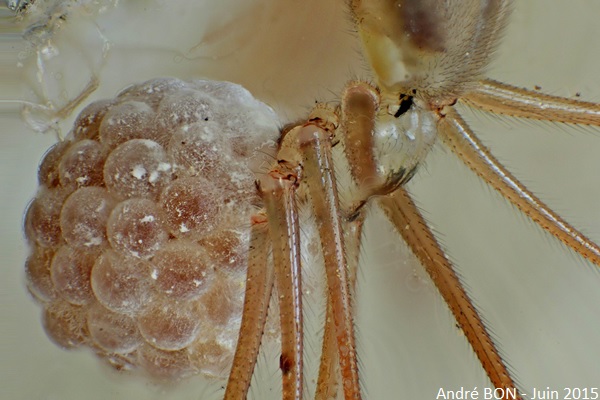
|
This immobile spider allowed me to perform some "photo stacking". This picture is the combination of 76 shots each taken with a shift of one-tenth of millimetre from the previous one. |
| [To know more about the Longbodied Cellar Spider] [Previous picture] [Top] |
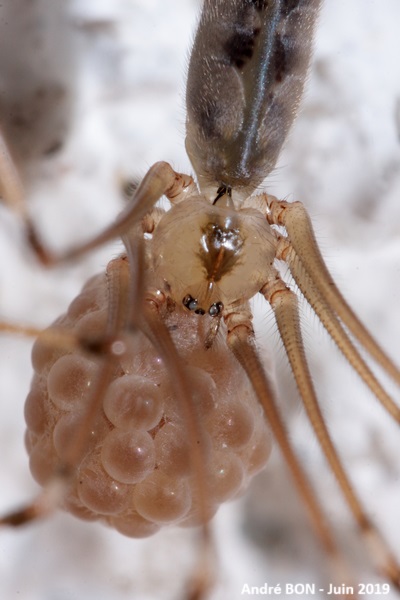
|
I never tire of photographing these silk bags full of eggs. |